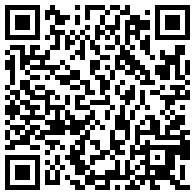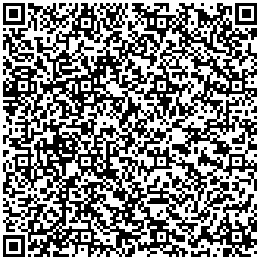Procurement isn’t rocket science,
it’s not brain surgery and it’s not curing illness, junior buyers have been
told.
For the most part, procurement is
“absolutely about following a series of systems and processes” to identify,
source and manage contracts, said Matthew Sparkes, head of financial services
at the Crown Commercial Service (CCS), who describes himself as “not a
procurement person by trade”.
What Is Procurement?
Procurement is the act of
obtaining goods or services, typically for business purposes. Procurement is
most commonly associated with businesses because companies need to solicit
services or purchase goods, usually on a relatively large scale.
Procurement generally refers to
the final act of purchasing but it can also include the procurement process
overall which can be critically important for companies leading up to their
final purchasing decision. Companies can be on both sides of the procurement
process as buyers or sellers though here we mainly focus on the side of the
soliciting company.
The Sri Lanka Government Procurement Guideline defines procurement as.
'Procurement means obtaining by
Procuring Entities of Goods, Services or Works
by the most appropriate means,
with public funds or funds from any other source
whether local or foreign.
received by way of loans, grants, gifts, donations.
contributions and similar
receipts. It would include purchase, rental, lease or hire
purchase. including services
incidental to the provision of the said Goods or
Services or the execution of the
Works'.
DEFINITIONS
Unless the Context otherwise requires, the following terms whenever used in these Guidelines have the following meanings:
“Bid or Quotation”
means a formal offer by a potential bidder indicating the price and other terms at which the bidder agrees to provide the Goods or Services or to execute the Works, where the offer tendered by the bidder is accepted by the Procuring Entity.
“Foreign Funding Agency” Means any multi-lateral or bi-lateral agency which has entered/intends to enter into an agreement with the Government of Sri Lanka and is not limited to the World Bank, Asian Development Bank, Japan Bank for International Co-operation.
“Foreign Funded Project”
means a project fully or partly financed by a Foreign Funding Agency.
“Goods”
means commodities, raw materials, products, equipment and other physical objects of every description, whether in solid, liquid or gaseous form and electricity.
“Procuring Entity”
means a Government ministry, provincial council, Government department, statutory authority, government corporation, government owned company, local authority or any subdivision thereof or any other body wholly or partly owned by the Government of Sri Lanka or where the Government of Sri Lanka has effective control of such body, that engages in Procurement.
Key Points
Procurement is the process of
purchasing goods or services and is usually in reference to business spending.
Business procurement requires
preparation, solicitation, and payment processing, which usually involves
several areas of a company.
Procurement expenses can fall
into several different categories, depending on the procurement demand.
Competitive bidding is usually a
part of most large scale procurement processes involving multiple bidders.
How Procurement Works
Procurement and procurement
processes can require a substantial portion of a company’s resources to manage.
Procurement budgets typically provide managers with a specific value they can
spend to procure the goods or services they need. The process of procurement is
often a key part of a company's strategy because the ability to purchase
certain materials or services can determine if operations will be profitable.
In many cases, procurement
processes will be dictated by company standards often centralized by controls
from the accounts payable division of accounting. The procurement process
includes the preparation and processing of a demand as well as the end receipt
and approval of payment.
Comprehensively, this can involve
purchase planning, standards, specifications determination, supplier research,
selection,financing, price negotiation, and inventory control. As such, many
large companies may require support from a few different areas of a company for
successful procurement.
Procurement Committee
Some companies may even choose to
hire a chief procurement officer to lead these efforts. A chief procurement
officer can oversee the establishment of procurement standards, work with
accounts payable to ensure procurement standard integration and efficient
payment, and serve on procurement teams making procurement decisions when there
are multiple competitive bids.
Overall, procurement costs will
be integrated into the financial accounting of a business, as procurement
involves acquiring goods and/or services for the revenue goals of the business.
Financial Accounting
Procurement processing can be
divided and analyzed from several angles. Companies and industries will have
different ways of managing the procurement of direct and indirect costs. Goods
companies, as compared with services companies, will also have different ways
of managing costs.
Direct vs. Indirect Procurement
Costs
Direct spend refers to anything
related to the cost of goods sold and production, including all items that are
part of finished products. For manufacturing companies, this can range from raw
materials to components and parts. For merchandising companies, this will
include the cost at which merchandise is purchased from a wholesaler for sales.
For service-based companies,
direct costs will primarily be the hourly labor costs of employees performing
services. Procurement for items pertaining to the cost of goods sold directly
affects a company’s gross profit.
By contrast, indirect procurement
involves non-production-related purchases. These are purchases a company uses
to facilitate its operations. Indirect procurement can involve a broad range of
purchases including office supplies, marketing materials, advertising
campaigns, consulting services, and more. Companies will generally have
different budgets and processes for managing direct costs as compared with
indirect costs.
Goods vs. Services Procurement
Accounting
Procurement is part of the
expense process for all types of companies, but goods and services companies
account for revenues and costs differently. As such, accounting for procured
goods will also differ from accounting for procured services.
Companies focused on goods will
need to deal with the procurement of those goods as inventory. These companies
place a lot of importance in this area on supply chain management.
Service-based companies provide services as their primary revenue generator so
they do not necessarily rely as heavily on a supply chain for inventory
although they may need to purchase goods for technology-based services.
In general, the cost of sales for
many service companies is based on the hourly labor cost of employees providing
the service so procurement as a direct expense is not a major factor. However,
service-based companies will usually have higher relative indirect costs
because they typically deal with their own procurement as an indirect expense
through marketing.
Special Considerations
Competitive bidding is a part of
most business deals involving multiple bidders. The competitive bidding process
for goods is usually more simplified than for services. Procurement is also the
term used for purchasing goods and services on behalf of the government which
has its own bidding processes and requirements.
Competitive bidding for all types
of goods generally involves proposals that detail the per-unit price, shipping,
and delivery terms. Competitive bidding for the procurement of services can be
more complex since it can involve a multitude of things including individuals
involved, technology services, operational procedures, client servicing,
training, service fees, and more.
In each case, the solicitor of
bids chooses the supplier they want to work with based on both operational
business aspects as well as costs. The solicitor is then responsible for
accounting for expenses depending on the goods or services agreed to.
Government agencies and large companies may choose to solicit procurement
proposals on an annual or scheduled basis to ensure that they continue to
maintain the best relationships for their business.
Tender Process and Notices
Any organization that wants to place an order after the inquiry is done, needs to fill out a tender. A tender is essentially an official letter that the organizations have to send for the procurement of the goods and services required on a large scale. For the execution of projects also tender notice is required. Thus, the tenders are filled when an invitation is received for bidding. In this, the organizations fill out their quoted prices in exchange of goods and services which are further subjected to stated conditions.
Preparing Tender Notices
A tender notice can be prepared in the form of tabular or serial or paragraph form. The tenders may be open to all the parties and are often done for pre-qualification purposes. They are meant for registered parties only.
While for the jobs that are funded through foreign assistance or loans which requires heavy technology or sophisticated machinery can be offered through global tenders.
Thus, the delivery details and the estimated value of services and goods are included in the tender. The bids that are made through tender are in non-transferable form. They are available in the form of documents, which are sold and printed only by the concerned authorities.
Further, these forms are divided into different sections which are dealing with commercial conditions and technical specifications of the product.
There is a difference between the tender and pre-qualification for a contract. Pre-qualification is completely different from a tender. It is not even a form of tendering. Because the document which precedes the tender is called pre-qualification. It is done to identify who are allowed to tender for the specific contracts.
Thus, an advertisement for pre-qualification does not mean an advertisement for tendering. Because pre-qualification just allows the organizations interested to express their desire in order to be eligible for a tender. Once the organization is pre-qualified for a particular contract than only it is eligible for that particular tender.
Thanks https://www.investopedia.com



